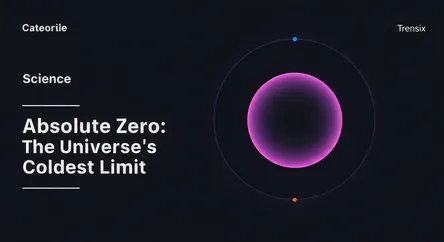Science
Absolute Zero: The Universe's Coldest Limit

Discover absolute zero, the theoretical coldest temperature where all particle motion ceases. Learn about 0 Kelvin and its role in quantum mechanics.
What is it?
Absolute zero is the lowest possible temperature, a state where all classical particle motion ceases. Designated as 0 on the Kelvin scale (0 K), it's equivalent to -273.15° Celsius or -459.67° Fahrenheit. According to the laws of thermodynamics, reaching absolute zero is impossible, but scientists have come incredibly close. At this point, matter exhibits strange quantum effects, as particles still retain a minimum energy called zero-point energy. It represents a fundamental limit in the universe and is the baseline for the Kelvin temperature scale, which is used extensively in scientific research.
Why is it trending?
Research pushing the boundaries of cold is consistently in the news. Scientists are getting ever closer to absolute zero to study exotic states of matter, such as Bose-Einstein condensates. These ultra-cold environments are essential for developing next-generation technologies, particularly quantum computers. Quantum computing relies on maintaining delicate quantum states, which are only stable at temperatures near absolute zero. As companies and nations race to build functional quantum computers, the methods for achieving and studying near-absolute zero temperatures are a hot topic in physics and technology.
How does it affect people?
The pursuit of absolute zero isn't just theoretical; it drives powerful real-world applications. Technologies like MRI machines and powerful particle accelerators rely on superconductors that must be kept extremely cold to function. The principles learned from laser cooling are used in ultra-precise atomic clocks, crucial for GPS navigation. In the future, advancements in this field will underpin the quantum computing revolution, potentially leading to breakthroughs in medicine, materials science, and artificial intelligence, changing our world in profound ways.